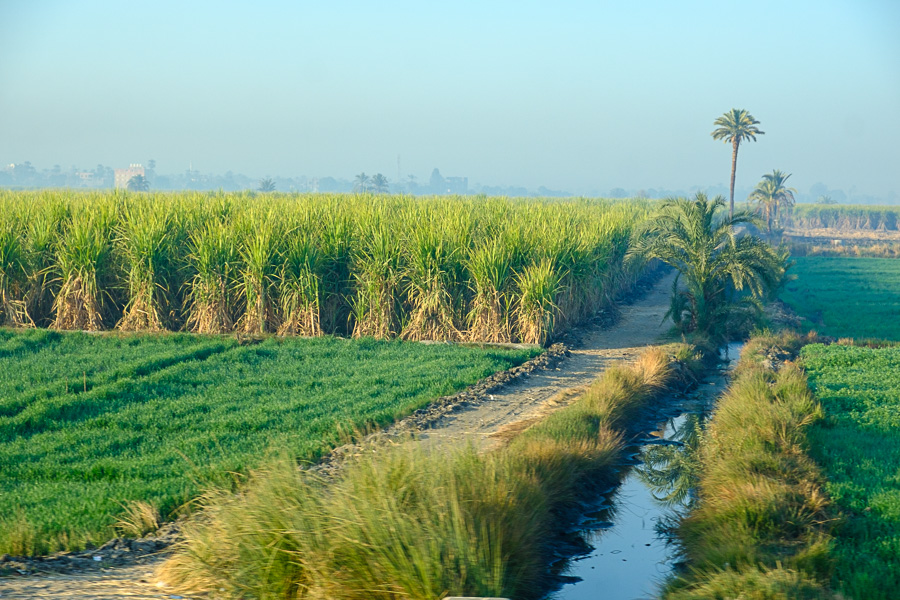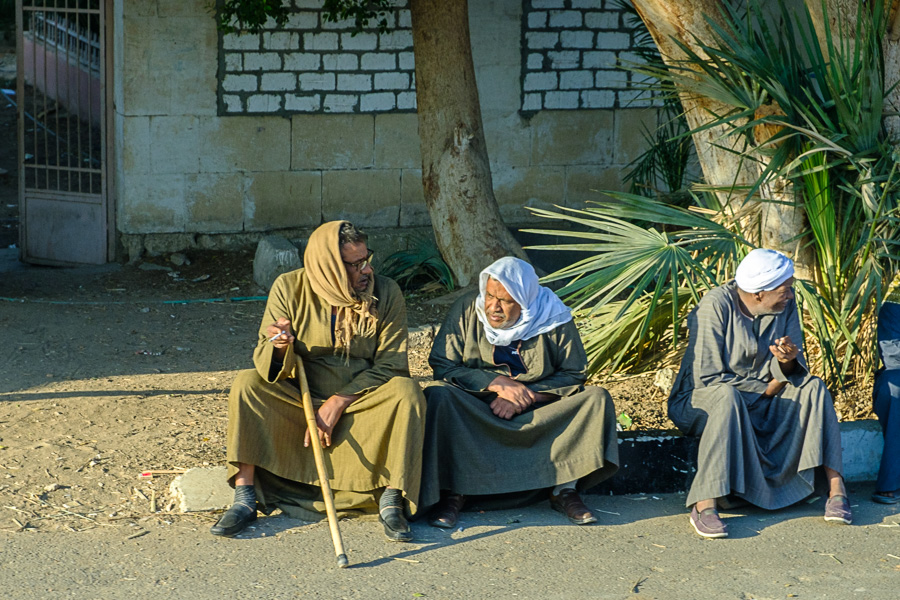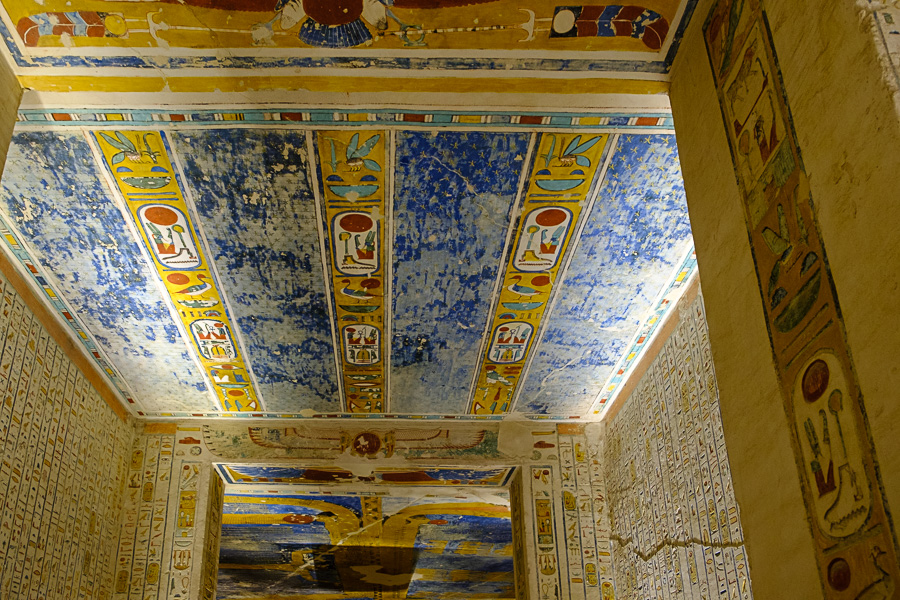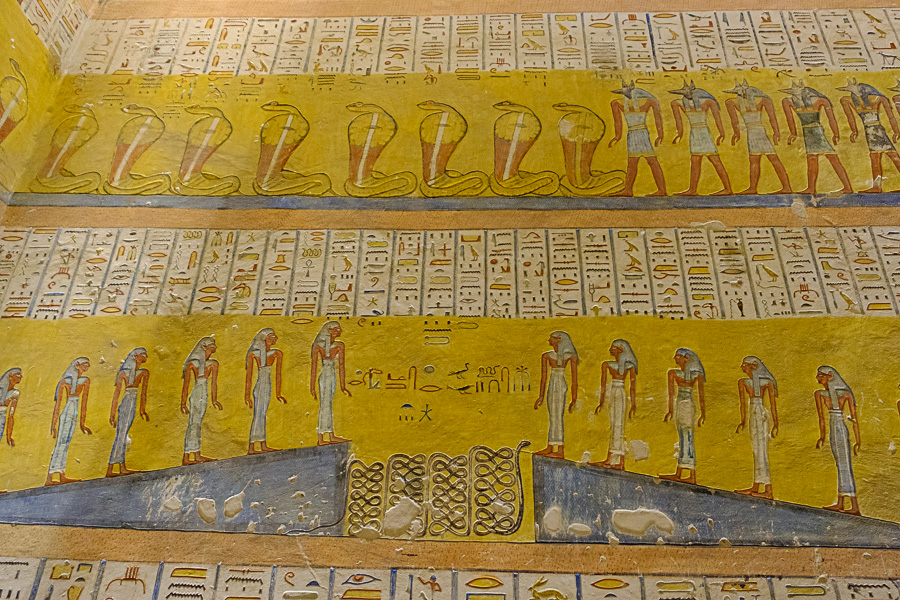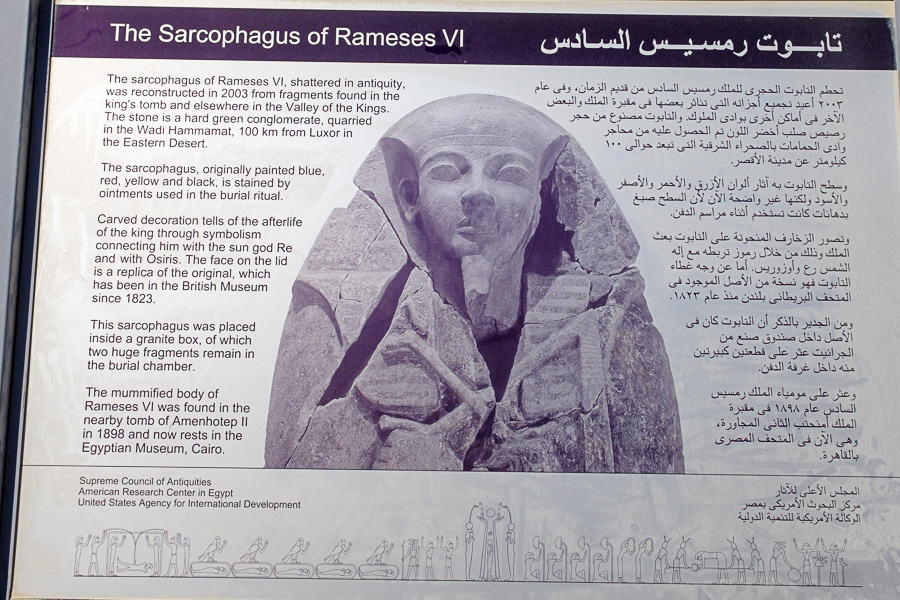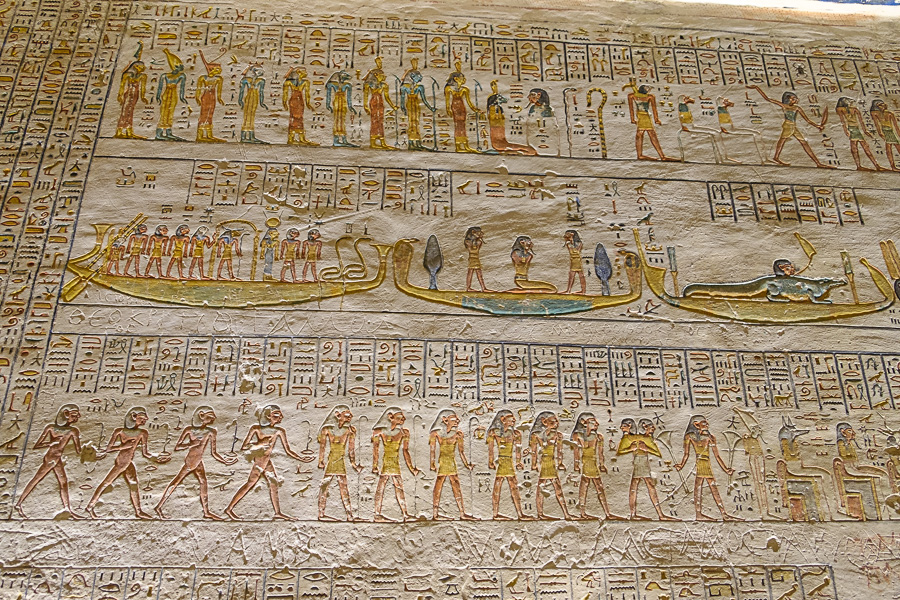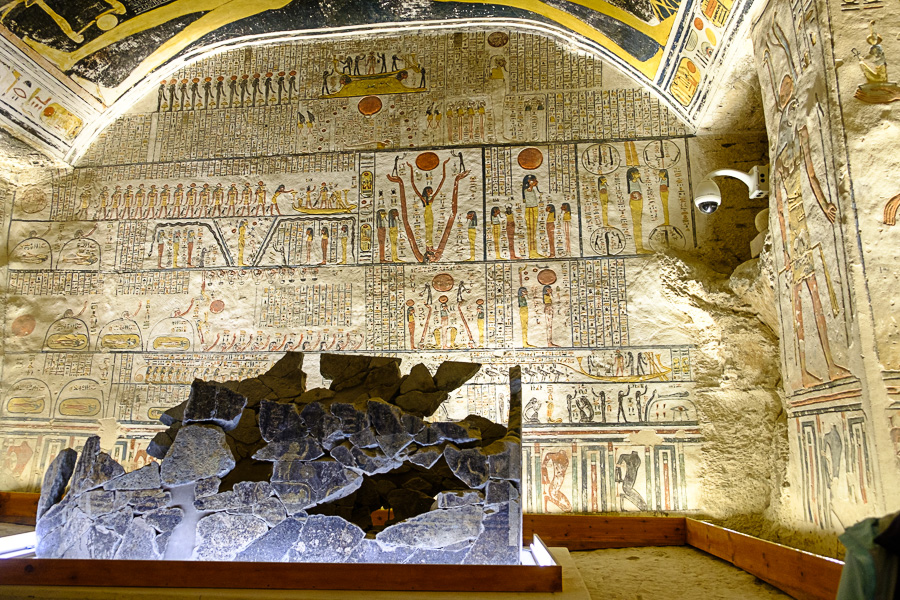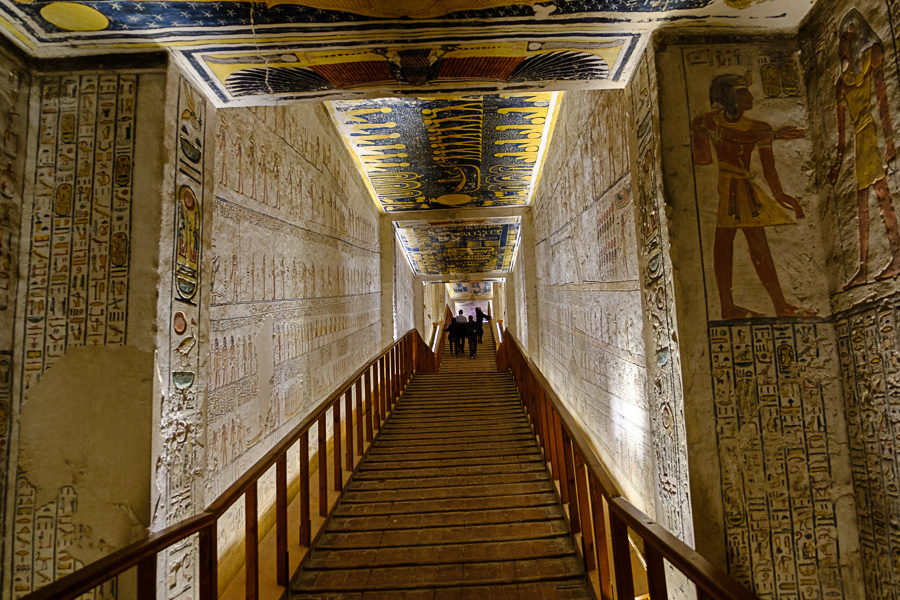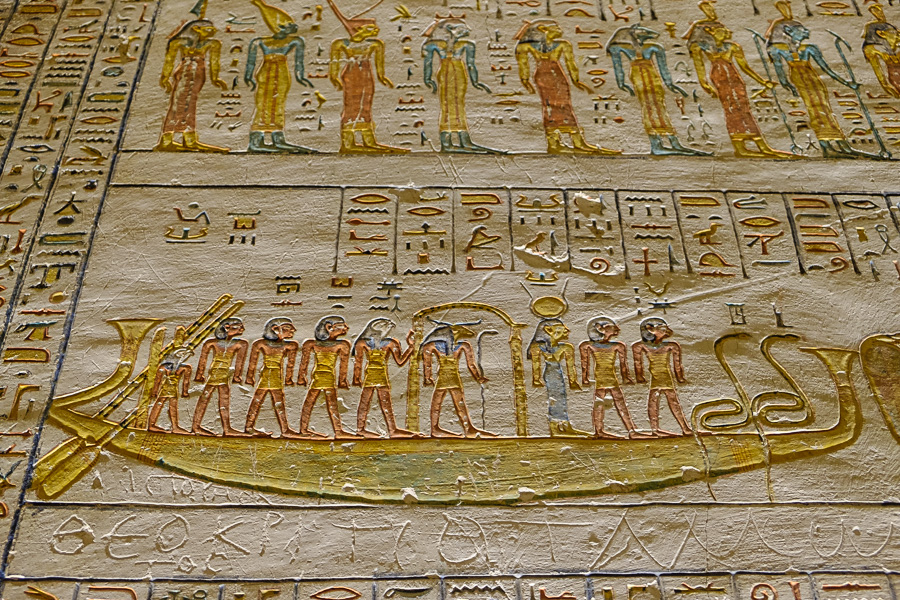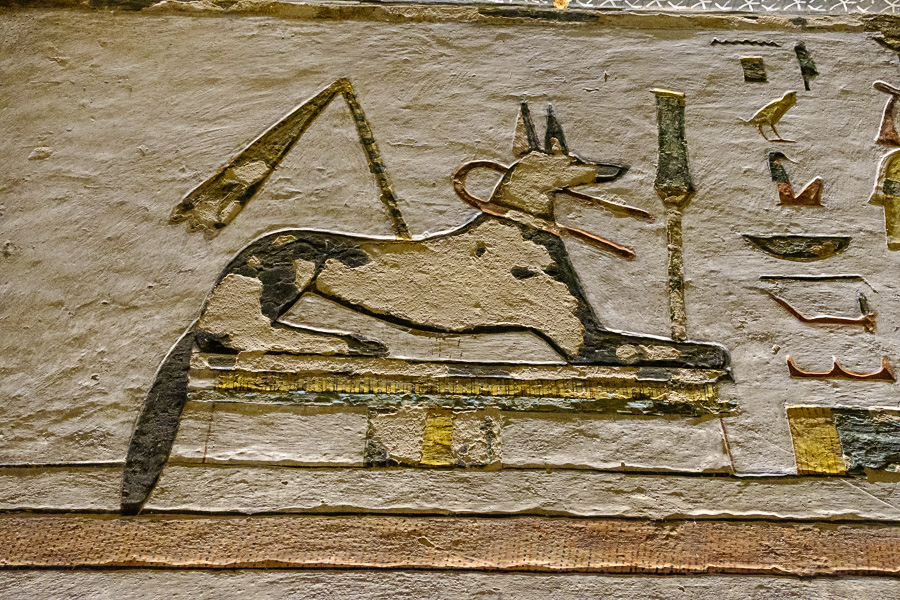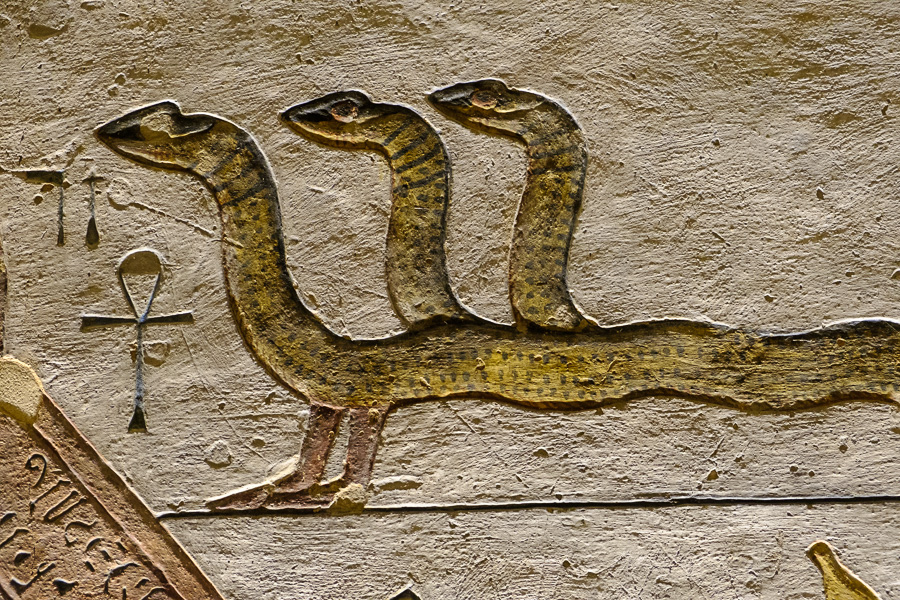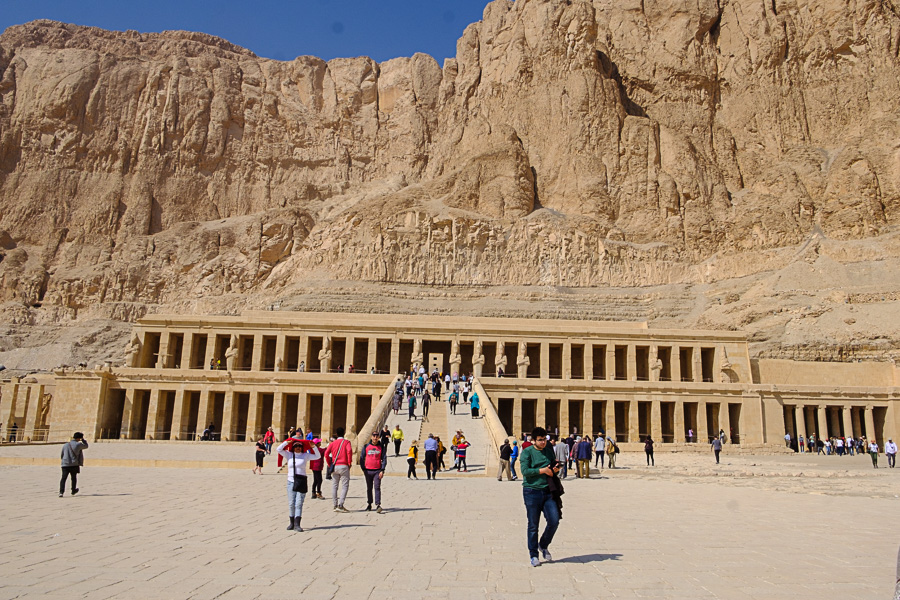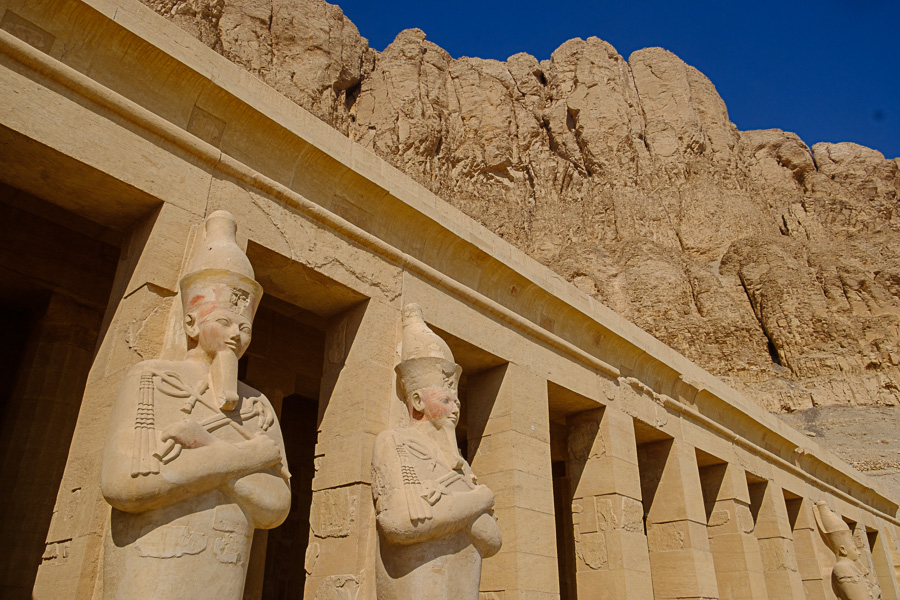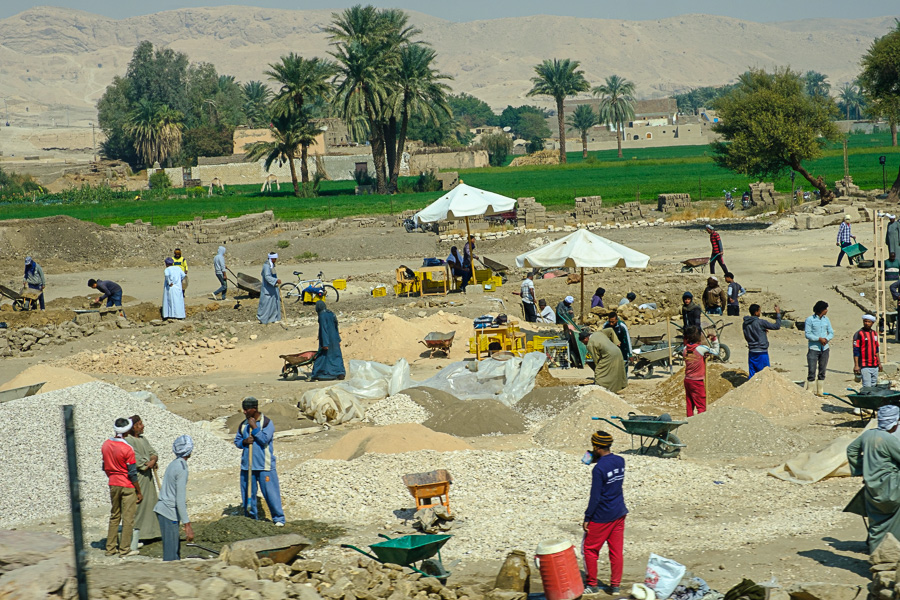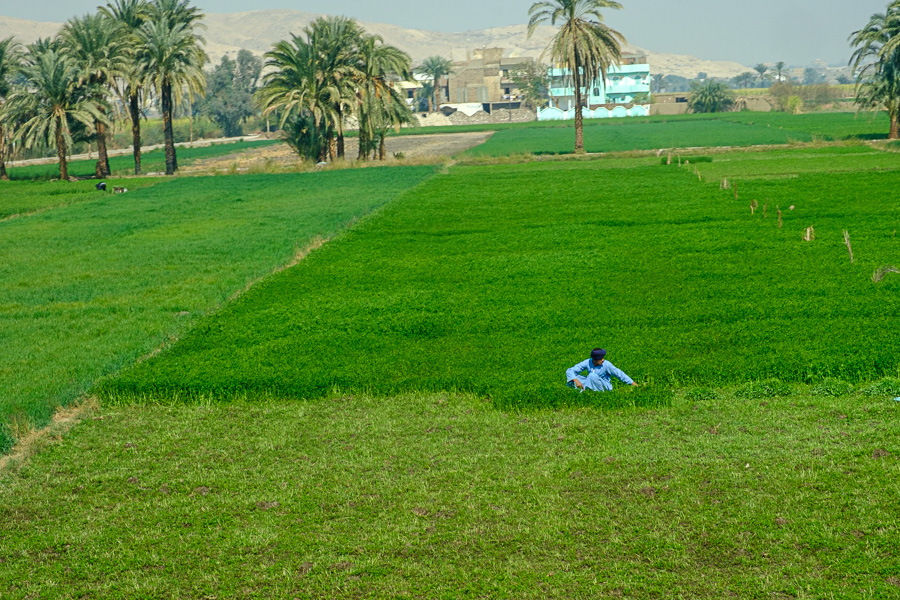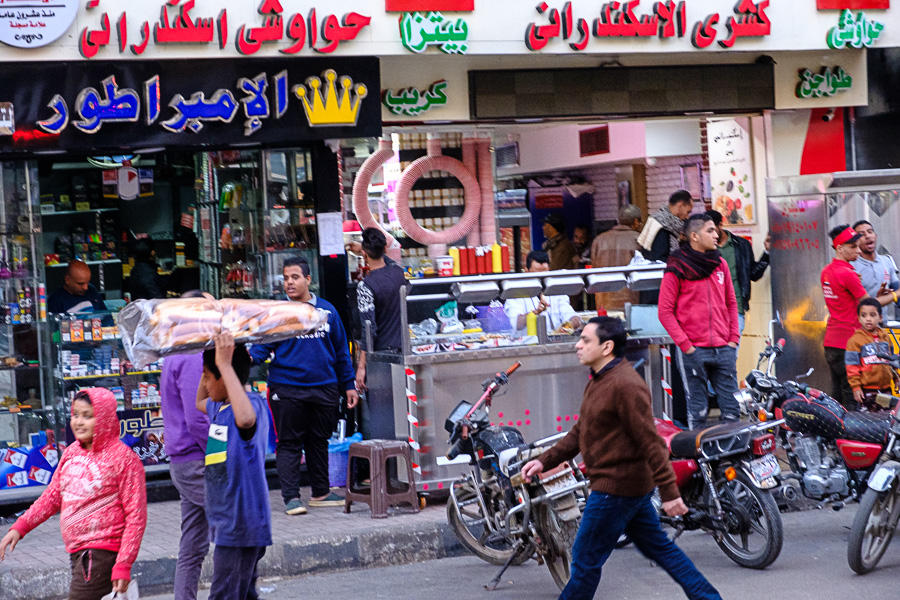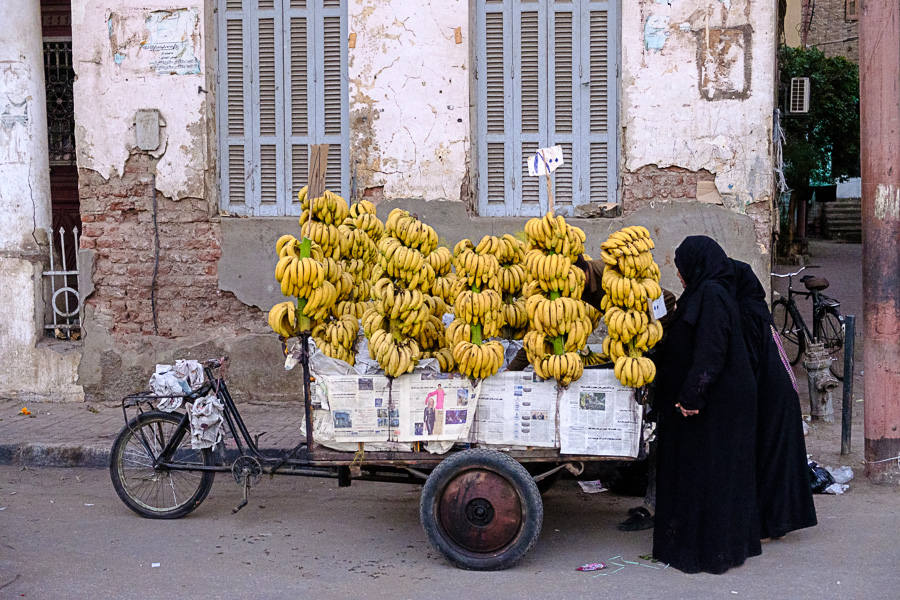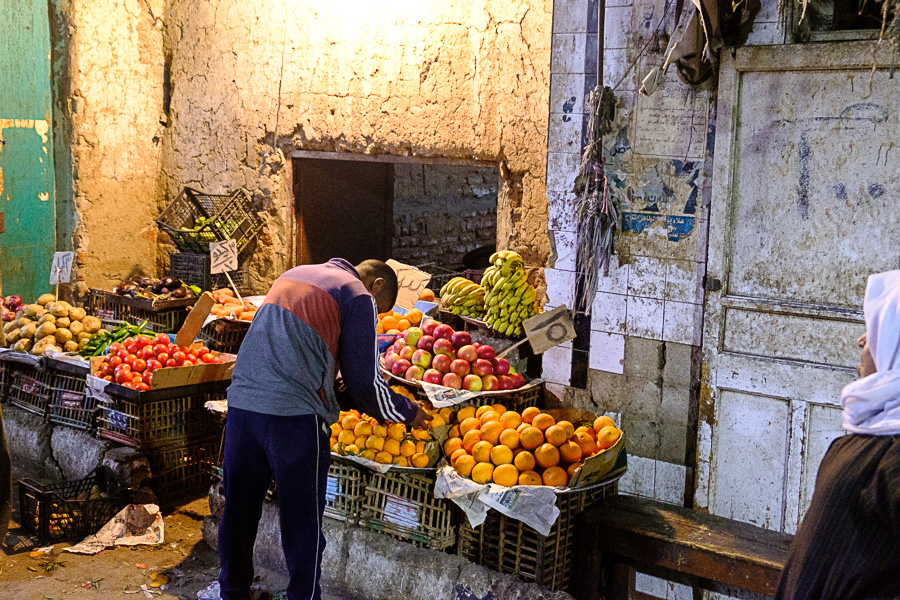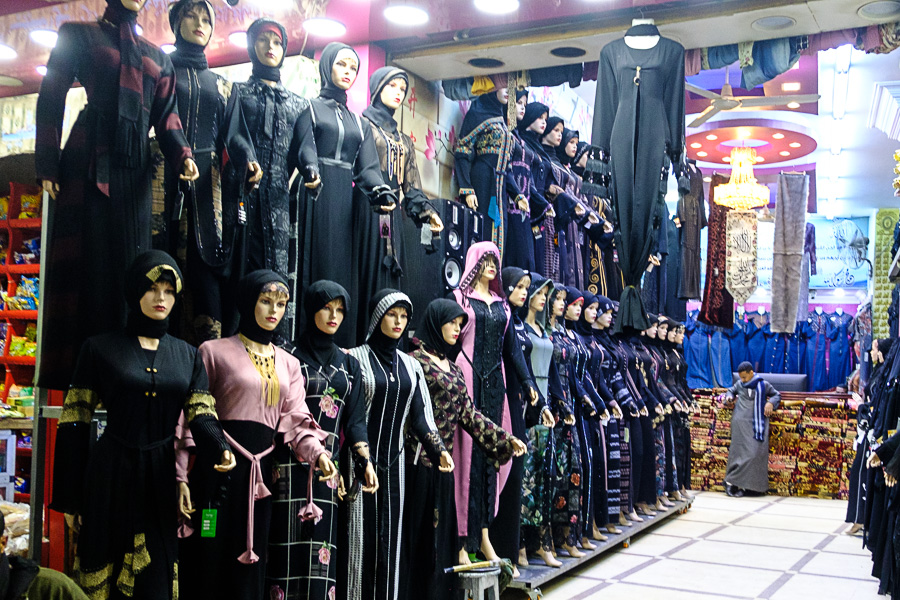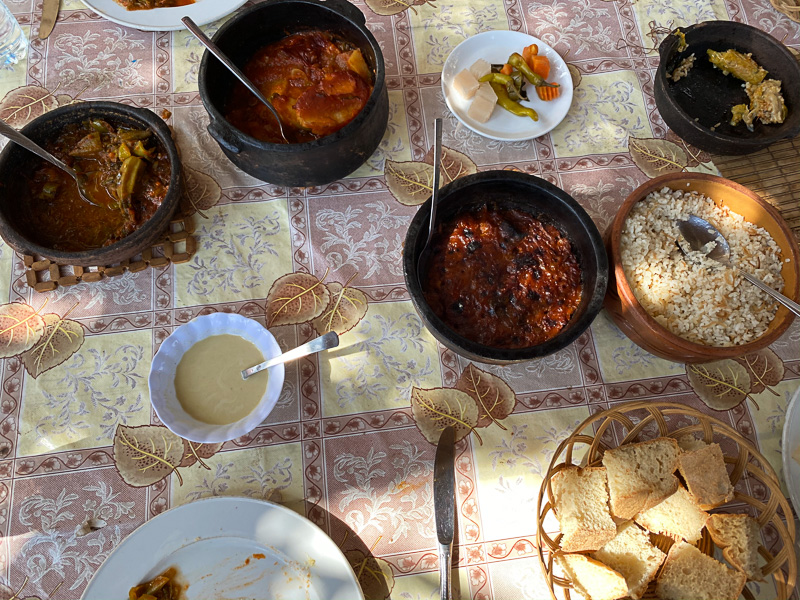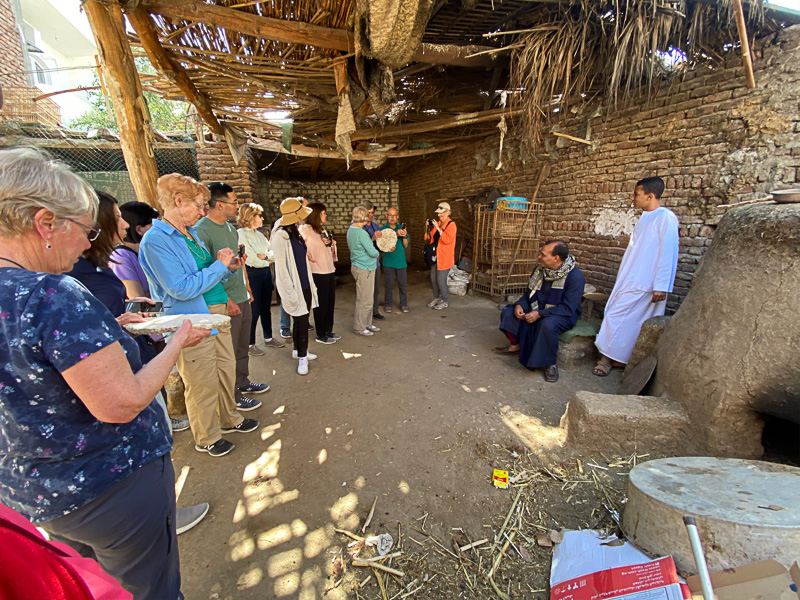The sun rises in the east and sets in the west, right? The ancient Egyptians used that fact to establish the location of their cities: Cairo, Luxor and others. Life is the process of moving from one house (our temporal life on earth) to the life in the house of eternity. We don’t die, we simply move houses. And it therefore makes sense for the main city of Luxor to be on the East Bank of the Nile to the Valley of the Kings on the West Bank.
Today we visited the West Bank where we saw not only the Valley of the Kings but also the Valley of the Queens and burial chambers for other nobles and even artisans and workers.
Luxor (or Thebes as the Greeks called it) was the capitol city during the New Kingdom from 1550 to 1070 BCE, almost 500 years. It’s the period that includes Ramses II and Tutankhamen among many others. Ironically, Ramses II, the pharaoh who built the biggest and best and most temples gets virtually no visitors at all in the Valley of the Kings. Both his mortuary temple and his tomb have been so badly damaged that they are not open to the public.
As soon as a pharaoh was crowned as such, he and his administration began burrowing into the side of the Valley to establish his burial chamber. The longer he lived, the more expansive his chamber. Only upon his death would the final chamber be formed. The walls and ceilings of the tomb complex were elaborately carved and painted. Typically, an elaborate sarcophagus with a matching lid held the mummified body. Gold, silver and other valuable items were left in the chamber to help the deceased pharaoh reach and enjoy the next world.
Naturally, royal tombs were a sore temptation for grave robbers. Elaborate, long passageways were dug to make it difficult for grave robbers to find and take the loot. It didn’t work too well. Tombs were plundered in late Roman times and before; Christians used tombs as places of worship and to live. The location of tomb entrances were poorly kept secrets. The result: most were plundered early on and what we see is what remains.
Sixty-three tombs have been identified in the Valley of Kings. Our balloon pilot yesterday said perhaps 10% of all tombs have been found so far. The government is attempting to move those mud-brick houses that stand on suspected burial chambers to new housing away from the Valley of the Kings.
We visited the tombs of Ramses III, Ramses IV, Ramses VI and two others. All featured wall and ceiling carvings and paintings, many in very good condition. The designs are similar to what we found in the temples we’ve been visiting.
Next we visited the temple of Queen Hatshepsut, who ruled Egypt from 1479 – 1458 BCE. She came by her position through lineage. But to keep peace in the family her younger brother acted as her assistant pharaoh for all of those years. She built a very impressive mortuary temple near the Valley of the Kings and Queens. Her plan was to dig a passageway from her temple through the mountain and come out the other side in the Valley of the Kings. The rock proved to be unstable and that plan was abandoned.
Her brother wasn’t too happy playing second fiddle to his sister. As soon as she was gone, he destroyed every statue in her temple that bore her likeness. Talk about sibling rivalry!
We were getting a bit peckish by then, so Hatem called and audible and took us to lunch before completing our grave tour. Lunch turned out to be at a West Bank farmhouse. Achmed, our host, served a lunch prepared by his mother and his family. He said that 85% of what we ate was grown on his 4-hectare farm. (One hectare equals about 2.5 acres.) They grow all sorts of vegetables and have a water buffalo, horse, donkey, chickens and I don’t know what all else.
The farm basically feeds the family with whatever is left over being sold in the market. But what a family it is. Achmed comes from a family of nine kids: five brothers and four sisters. All but one lives in the farmhouse. Each of those is married and has either 3 or 4 kids. I count upwards of 50 people living under one roof. Each family has a private room. All help in the fields.
Achmed’s assistant was his son (or was it his nephew; I didn’t get it quite straight). This ninth-grader is top of his class and spoke to us in very good English. He told me he wanted to go to America and learn to be a doctor so he could help the poor in Egypt. His father/uncle isn’t so sure but of course we encouraged him to do so. Actually, his father/uncle is very proud of him. He was second in his class through grade school but only because his friend, the number one student, was the son of a teacher at the primary school they attended. As soon as they moved on to middle school the boy attained the number one position.
Then it was on to the Valley of the Queens where we saw two tombs. Same idea. Some of those buried here are actually second-level nobility. Ramses II has a burial chamber large enough to handle all of his sons: 52 in total. He had four wives and countless concubines. Busy guy.
From there we bussed to the Steigenberger Nile Palace Hotel. Our room with a spacious patio overlooks the Nile and is centrally located. We’ll be here for one night; we leave for Cairo tomorrow evening.
Having had a big lunch, we didn’t need dinner. Instead, Hatem arranged for carriage rides that took us from the hotel through central Luxor to a small café over a hookah shop. It’s called a shisha here – a pipe that burns charcoal at the top; the smoke is sucked through a long pipe that causes it to pass through a flavoring chamber and though a vial of water.
At the café we had drinks – Judy had cinnamon and milk and I had a hot ginger drink – and sandwiches that turned out to be ground lamb in a pita-ish pocket.
After the snack, four of us guys went off to explore the nearby tourist market. It was similar to the vendor kiosks at most tourist stops in Egypt. “Hey mister, one dollar. Tee shirts. Come take a look Where you from? America? I love America! My sister lives in America.” The guys in this market (they were all guys) weren’t quite as pushy. I had an interaction with a jolly old spice salesman.
The last time I ran up against a fast talking spice salesmen. Benny ran a curry shop in Durban, South Africa. We’re still using curry from that trip. I was much more restrained this time. I only bought a small bag of Nubian curry and a bag of locally grown cumin. And another bag of curry he talked me into; Bedouin curry, whatever that is. All for only 80 Egyptian pounds; about $5 US.
The morning is “on our own” until around 11:30 for a tour of a local cotton facility and then at 2:30 we’ll leave for the airport by way of the Luxor temple.

